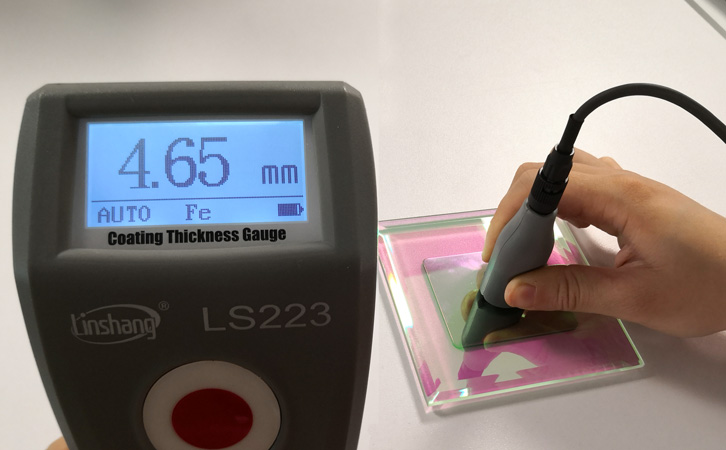How to Use Material Thickness Gauge?
Common small-range material thickness gauges are used to test the thickness of coatings on metal substrates such as paints, inks, and films. A large range of material thickness gauges can also test ceramic, glass, plastic and other sheet thicknesses.
Linshang Technology has a number of material thickness gauges, mainly used to test the thickness of paints, inks and other coatings on the surface of metal substrates. In addition, there is a large-scale LS223 material thickness gauge (equipped F5N3 probes can be used to test thin glass, ceramics, plastics, etc. This material thickness gauge can be tested up to 5mm and can be used for a wide range of materials.
Below we will demonstrate the operation of measuring a piece of glass about 5mm thick with this material thickness gauge.
1. The handheld instrument probe can be turned on by triggering. Of course, you can also press the power button to turn it on.
2. After starting the machine, press the probe vertically on the standard zero adjustment board. If the instrument data shows zero, we can start to test. If not, we need to do the zero adjustment.
3. After the zero adjustment is completed, place the glass to be tested flat on the zero adjustment plate and press the probe vertically on the glass surface. If you are worried that your operating gestures are not correct enough, you can make multiple measurements. The measuring interval of the instrument is 0.5 seconds. We can confirm the final glass thickness by data from multiple measurements.
4. As you can see from the picture below, the thickness of this glass is 4.65mm.
5. After the test is completed, press and hold the power button to shut down. If there is no operation within 1 minute, the material thickness gauge will automatically shut down.
In addition to a large measurement range and short measurement intervals, the material thickness gauge is also equipped with a ruby probe, which ensures long-term use of the instrument. The instrument also uses advanced digital probe technology, and the stability of the data is greatly guaranteed.
